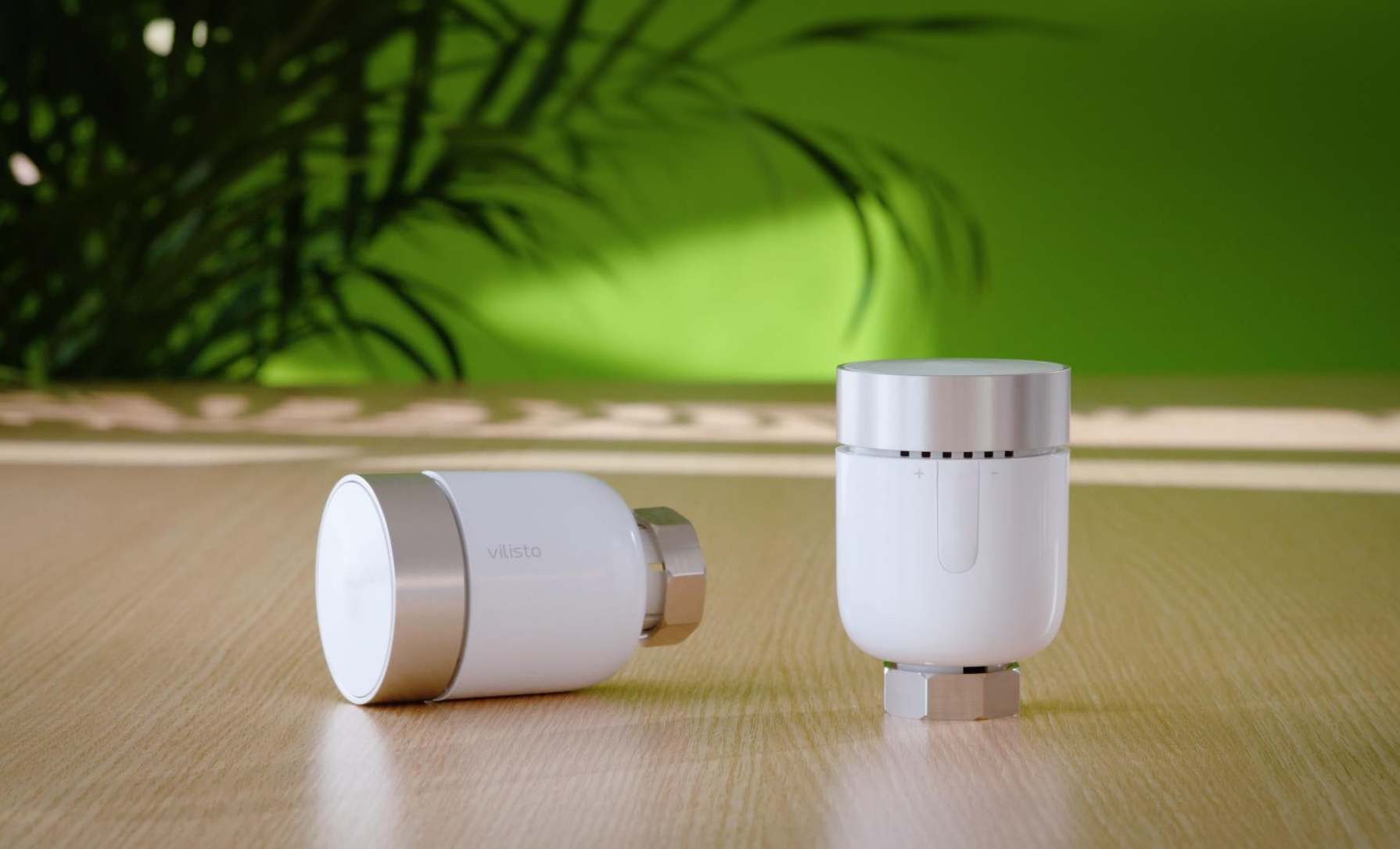Intelligent adaptive hydronic balancing for non-residential buildings is the latest technology from Hamburg-based energy-saving company vilisto. The company has developed software that is installed on its self-learning thermostats and automatically performs hydronic balancing. This is a tried-and-tested measure for adjusting water-based heating systems to suit the respective building and ensuring even heat distribution in all rooms.
Thanks to the software, this is now done automatically and within minutes instead of days or even weeks, as is usually the case with analog balancing. Its effectiveness has been confirmed by a certificate from TÜV Rheinland. For the software development, vilisto received financial support from the German Federal Ministry for Economic Affairs and Climate Protection (BMWK), which is specifically promoting solutions that quickly and effectively reduce energy consumption in Germany as part of the ‘Pilotprojekt Einsparzähler’.
“With ‘vilisto.balance’, we are making hydronic balancing easier than ever before. Given the persistent skilled labor shortage in Germany and the highly manual, time-consuming nature of the balancing process, the frequently required – and sometimes legally mandated – hydronic balancing is not conducted as often as necessary”, says Christoph Berger, Managing Director of vilisto, explaining the new technical development. “Our technology enables hydronic balancing at the touch of a button. It is also adaptive and constantly adjusts to the changing load situation in the building. We are convinced that the real accelerator of the heating transition in existing buildings is a symbiosis of sustainability, automation and digitalization.” Just a few days ago, vilisto’s intelligent thermostats received the iF Design Award – one of the most prestigious design prizes in the world.
The vilisto technology corresponds to hydronic balancing on a thermal basis, which is considered to be less complicated than the industry standard using method B. The method uses the sensors built into the thermostat to compare the temperatures in each room with each other in order to achieve a balance in heat distribution. This eliminates the need for time-consuming calculations and manual adjustment of individual valves. Instead, valve settings are changed digitally via the software integrated in the thermostat on the basis of these room-specific temperature curves. In the classic method, this is still often done manually: the heating load is calculated for each radiator and heating circuit, then the valves on the radiator are adjusted by unscrewing each individual analog thermostat. With the new intelligent version, the adjustment can now be performed remotely.
Why is hydronic balancing of heating systems necessary?
Since October 2024, the Building Energy Act mandates that water-based heating systems in buildings with six or more units must be inspected and optimized. Hydronic balancing is one of the approved methods for achieving this. Balancing is even mandatory for new heating systems and new buildings (§60c GEG). Given the energy transition and the significant CO2 emissions of existing buildings, experts recommend hydronic balancing as nearly always beneficial. In many cases, buildings that have not been properly calibrated face issues with rooms being too cold or too warm, leading to substantial potential for energy waste. This is because the following scenario occurs in many non-residential buildings: the heating does not get warm on the fourth floor despite being set to level 5, while the desired temperature is quickly reached on the first floor. To counteract this, the pump output and flow temperature are often increased so that the rooms on the fourth floor are also well supplied. However, this comes at a high price: the efficiency of the systems decreases and more energy is consumed than necessary. In a hydronically balanced building, on the other hand, the heating system is set so that heat is distributed evenly in all rooms – with low and efficient settings in the system technology.
About vilisto
vilisto is a Hamburg-based climate protection company that uses digital heat management to reduce energy consumption in non-residential buildings. At the heart of the energy-saving solution are intelligent thermostats that use patented, integrated sensors and self-learning algorithms to detect room usage and automatically optimize the temperature. This not only saves up to 32 percent of heating energy, but also reduces CO2 emissions. vilisto was founded in 2016 by Christoph Berger, Christian Brase and Lasse Stehnken and currently employs 90 people. More than 300 customers are already part of the climate mission. Further information can be found at www.vilisto.de/en.
Press contact
vilisto GmbH
Kerstin Brouwer
[email protected]
+49 40 3346 812 00
+49 152 09367917


